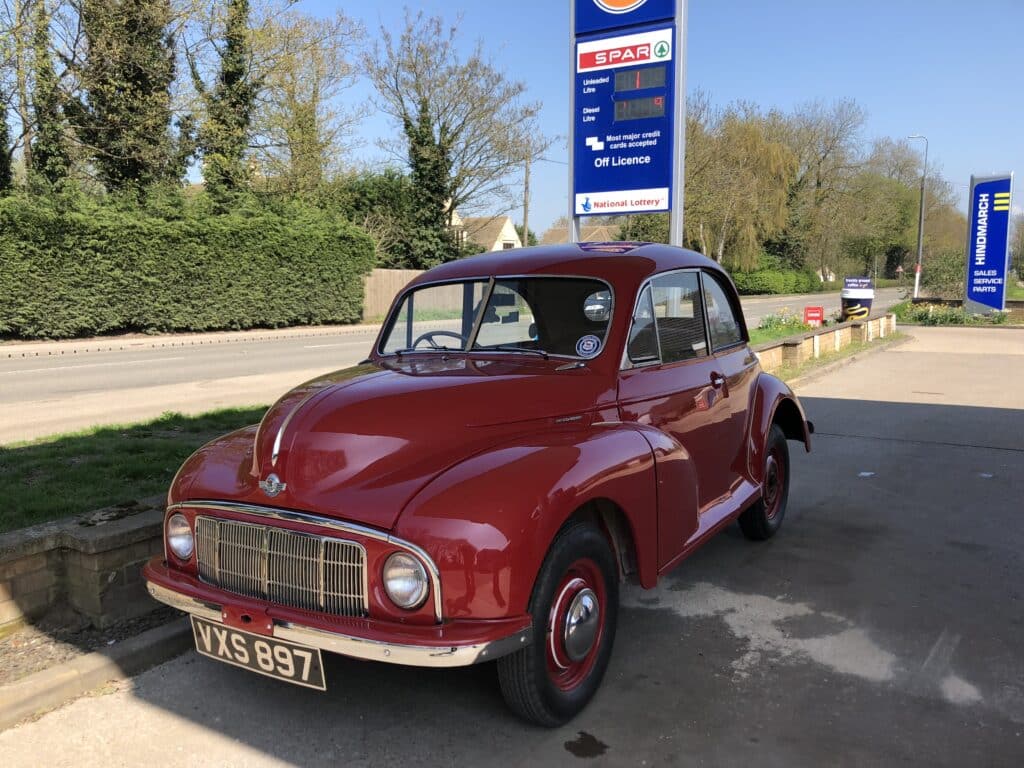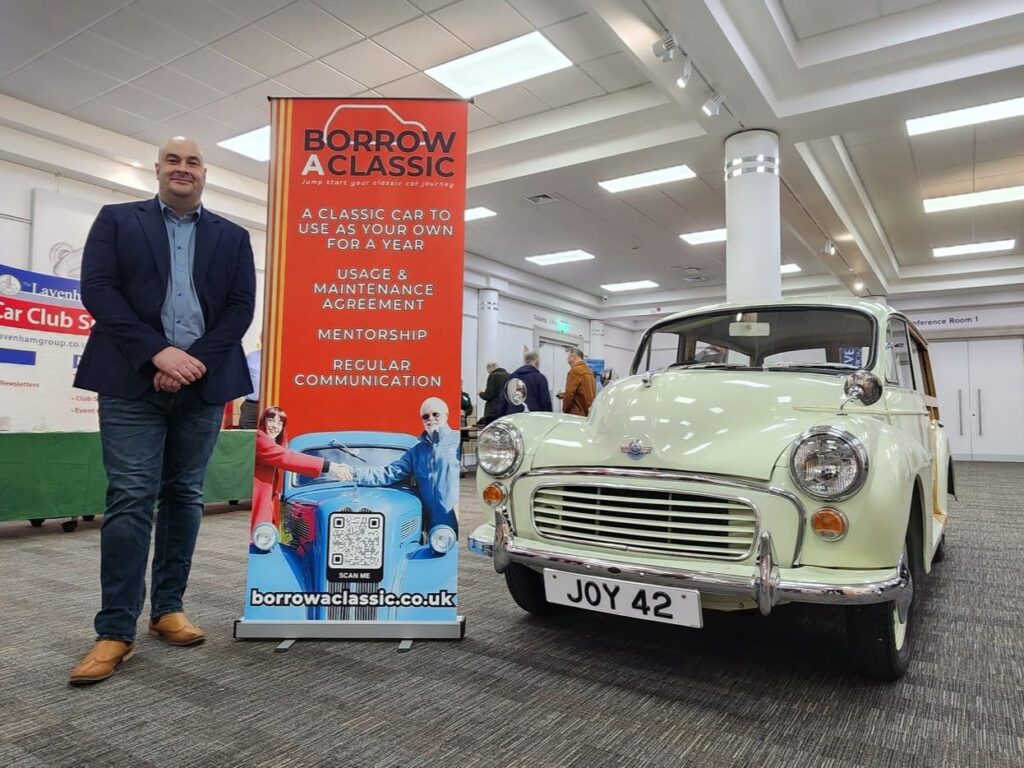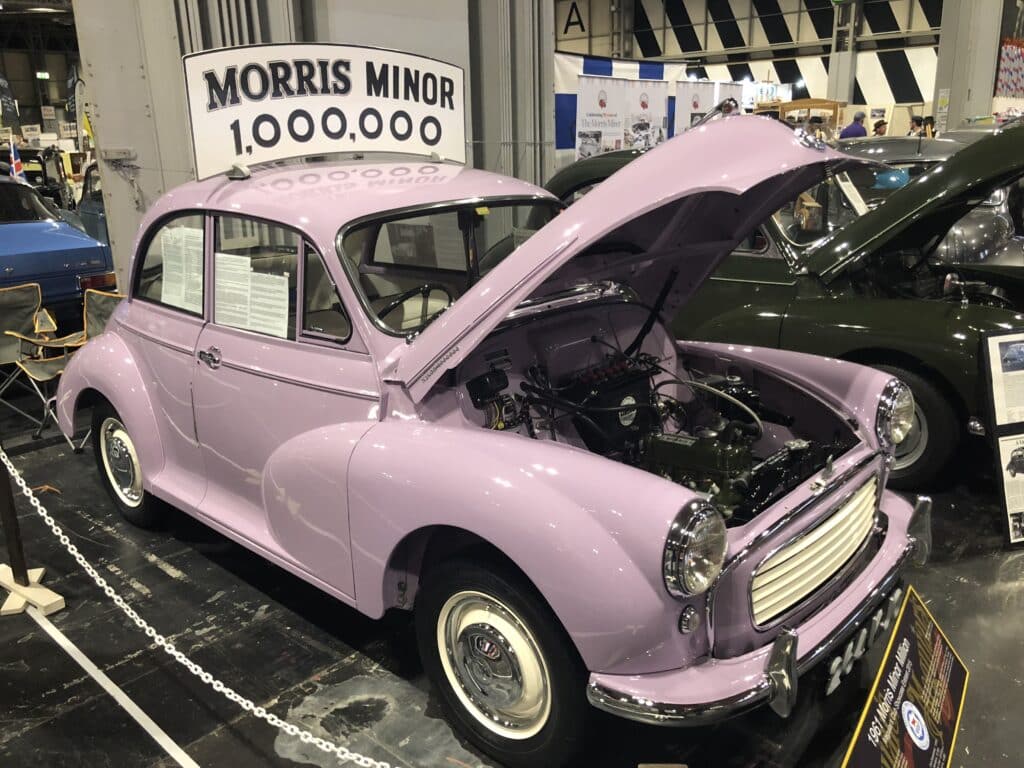
Aww, it’s a Moggy! That’s the most common reaction to seeing one of these fabulous machines out on the road and let’s be honest, it’s a car that you cannot help but love.
It’s the sort of car that turns more heads than any Ferrari whilst being accessible and affordable to everyone – a true car of the people. The Morris Minor manages to embody the spirit of Britain’s post-war motoring story better than anything else on the road.
Designed by the legendary Sir Alec Issigonis — the same man who later penned the equally iconic Mini — the ‘new’ Morris Minor was unveiled at the 1948 Earls Court Motor Show, the first such event since before The Second World War. Whilst it was a name that Morris had used on some pre-war models, this was a complete remodelling of the car.
It quickly captured the imagination of a nation emerging from wartime austerity. Over the next twenty years, it became one of the most recognisable sights on British roads, earning a lasting place in the hearts of enthusiasts. They were once seen on every street corner, and nearly everyone has a story to tell about one they owned or one that was in their family.
A minor revolution
When the Morris Minor first appeared, Britain was still recovering from the devastation of the Second World War. Petrol was rationed, resources were limited, and private motoring remained a luxury reserved only for the few. Against this backdrop, the Morris Minor offered something truly revolutionary: a compact, affordable, and practical family car that felt modern, well-engineered, and, importantly, fun to drive.
Issigonis’s vision was to create a car “for the people,” one that combined clever, but simple engineering with everyday usability. It was the first British car to sell over a million units, a feat that underscored its broad appeal and solidified its place in history. Between 1948 and 1971, more than 1.6 million Morris Minors rolled off the production line in Cowley, Oxfordshire, and later Birmingham.
In 1962, the Morris Minor was updated for the swinging sixties and received a new 1,098cc engine, replacing the previous 948cc unit. This gave the Minor more speed, power and torque as the roads around it became increasingly quicker. The gearbox was also strengthened, and braking was improved in line with the performance upgrades to offer larger front brake drums. Gone were the semaphore trafficators to be replaced with the large, round front side/indicator light units.
Ahead of its time
Part of the Minor’s success lay in its engineering brilliance – and there is genius in its simplicity. Issigonis designed the car with a wide track and low centre of gravity, giving it handling characteristics that were unusual for its class. Compared with many of its contemporaries, the Minor felt stable, predictable, and even sporty in the corners. Indeed, TV presenter and racing driver Tiff Needell once told me that he cut his teeth drifting the family Morris Minor around wet roundabouts, learning and perfecting car control at just 20 mph!
The original split-windscreen design of the 1948 models gave way to the more modern single-pane screen in 1956 with the launch of the Minor 1000. Its bulbous yet elegant curves, rounded wings, and simple chrome grille gave it an unmistakably British charm. The famous “smiley face” front remains one of the most recognisable in classic motoring – see one and you instantly smile, say aww and disappear into the distraction of nostalgic thoughts.
Inside, the Morris Minor was practical and uncluttered. Issigonis believed in maximising space, and the Minor’s interior offered generous headroom and good visibility, making it ideal for family use. This focus on practicality and comfort set the stage for his later work on the Mini, of course!
A Moggy for every moment
It was available in a variety of body styles, each serving a different audience.
- Two-door saloon: The quintessential model, perfect for everyday family use.
- Four-door saloon: Added practicality for growing families.
- Traveller estate: With its distinctive ash wood-framed rear, it became one of the most beloved variants and is still a favourite amongst collectors today.
- Convertible (Tourer): Offered open-air motoring on a budget.
- Commercial versions: The Morris Minor van and pick-up were a common sight with tradespeople, the Post Office, and what was once the ‘GPO telephone service.’
This adaptability meant the Minor was not just a car — it was a workhorse, a status symbol, and for many, a first step into the freedom of motoring.
An affordable car for the people
For many, the Morris Minor was their first car, their parents’ family runabout, or the trusty vehicle that took them to seaside school holidays. It was woven into the fabric of mid-20th-century British life. The sight of a Traveller with its polished wooden frame or the hum of a Minor 1000’s little A-series engine instantly evokes memories of a simpler, gentler age of motoring.
The Morris Minor was affordable to buy and inexpensive to run. Its robust mechanics meant that even in an age where reliability could not be taken for granted, the Minor proved dependable. Spare parts were cheap and widely available, and many owners took pride in maintaining their cars themselves. This DIY-friendly nature is one reason why the Morris Minor retains a strong following today: its simplicity means it remains one of the easiest classics for enthusiasts to keep on the road.

The author, Wayne Scott with the Borrow a Classic Morris Minor traveller
The Morris Minor as a classic car
In recent years, many classic car marques have seen astronomic price rises, many taking them well out of the realm of the average enthusiast. Morris Minors have remained true to their original purpose, and thanks to their long-lasting nature and large production quantities, they are still relatively common and therefore relatively affordable. While concours-level Travellers or rare convertibles command higher prices, good saloons are within reach of many enthusiasts. Thanks to their incredible passion and enthusiasm for these cars, the parts availability is also excellent, thanks to dedicated specialists, meaning restoration and maintenance are less daunting than with many other classics. This accessibility makes the Minor an ideal entry point for younger enthusiasts discovering historic vehicles.
Under the bonnet, the Minor is refreshingly simple. Its mechanicals are robust, with the A-series engine proving particularly enduring. So, with basic tools and a bit of know-how, they can keep a Minor running without the need for expensive workshops. In a world of increasingly complex modern cars, this do-it-yourself appeal adds to the Minor’s enduring charm.
How much is a Morris Minor worth?
This is one of those almost impossible questions, as there are so many different model types, and the values really depend on the condition and provenance of the car.
Travellers cost the most, with some reaching nearly the £20,000 mark for concours examples. However, projects can be picked up for around £5k. Prices are similar for the convertible cars.
An early saloon with the smaller engine can be found from £3k – £10k, with the more numerous and slightly more practical for modern roads Series 2 saloons fetching anywhere between £2.5k – £8k.
Insurance
They are incredibly cheap classics to insure as well, and for this alone, they make an excellent route into classic car ownership. Premiums are low thanks to the plentiful supply of parts, simplicity of construction and statistics tell us that few are involved in accidents. For us at Peter James, this is the ‘bread and butter’ of what we look after as a specialist classic car insurer for Morris Minors – we know them inside and out. So, call us today for a quote to insure your Morris Minor!
A vibrant club scene
The Morris Minor enjoys one of the most enthusiastic and welcoming owner communities in the classic car world. Clubs regularly host rallies, shows, and social gatherings where Minors of every variety can be admired. The shared passion of these groups keeps the cars alive and ensures knowledge and parts continue to circulate. Thanks to the Morris Minor Owners Club, there are rallies across the UK and abroad and enthusiasm for the car is as strong as ever.
The Morris Minor was never the fastest, flashiest, or most luxurious car on the road, but it was, and remains, one of the most loved. It brought freedom and independence to millions, showcased design ahead of its time, and built a reputation for reliability and charm that endures to this day.
For enthusiasts, owning a Morris Minor is not just about driving a classic car — it is about preserving a slice of history, connecting with a thriving community, and enjoying the sheer joy that this plucky little car continues to bring. As long as we continue to value heritage, simplicity, and a cute face, the Morris Minor will always have a place at the heart of classic motoring.




